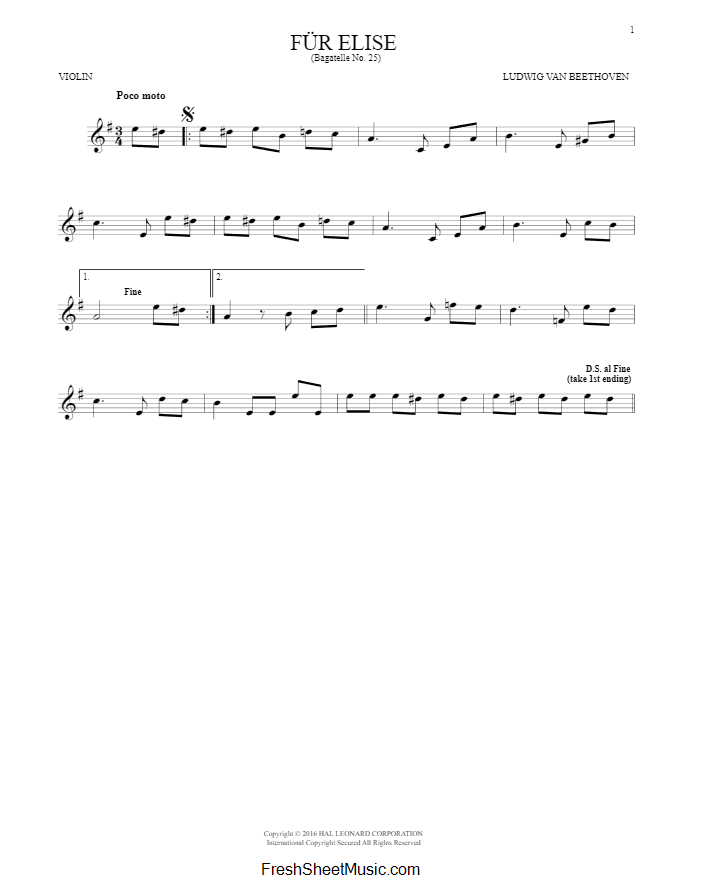Ludwig van Beethoven was a legendary German composer and pianist, and a towering figure in the world of classical music. Born in 1770, his profound influence spanned both the Classical and Romantic eras. Beethoven is best known for his nine symphonies, particularly the iconic ‘Fifth Symphony‘ and the ‘Ninth Symphony‘, which features the famous ‘Ode to Joy‘. Other notable compositions include the ‘Moonlight Sonata‘, the ‘Pathétique Sonata‘, and of course, the universally loved ‘Für Elise‘. Despite losing his hearing in his later years, Beethoven continued to compose, leaving an indelible mark on music history.
Understanding Für Elise Sheet Music for Violin
The key to mastering ‘Für Elise’ on violin begins with understanding the sheet music. Knowing your musical notation – the staff, the clefs, and the notes – is a fundamental step. ‘Für Elise’ is typically written in A minor, and the original composition includes a range of notes that might pose a challenge for beginners. But don’t fret; with patience and practice, you’ll conquer these musical hurdles.
The Step-by-Step Guide to Für Elise Violin Sheet Music
The first part of our ‘Für Elise’ violin tutorial involves breaking down the music into manageable sections. Don’t try to tackle the whole piece at once. Start with the iconic opening theme, which repeats throughout the piece. Focus on the rhythm and the bowing techniques required here.
Reading and Playing Für Elise Violin Sheet Music
As you move on to the other sections, take note of the key changes and the shifting time signatures. Remember to keep track of your fingering on the violin’s fingerboard. This will help ensure you’re producing the correct pitches as you’re playing Für Elise on the violin.
Download Sheet Music
Mastering Für Elise on Violin: A Beginner's Guide
The beauty of ‘Für Elise’ lies in its dynamics and expressions. Pay attention to the markings on the sheet music – the crescendos, decrescendos, and accents. These aren’t just decorative; they’re crucial to conveying the emotion Beethoven intended.
Tips for Playing Für Elise on Violin
Lastly, a few tips: Practice slowly, then gradually increase your speed. This allows you to master the piece’s technical elements before moving on to its musicality. Use a metronome to ensure you’re keeping in time. Finally, listen to different recordings of ‘Für Elise’ to familiarize yourself with its nuances.
Conclusion: Violin Tutorial for Für Elise
In this violin lesson for beginners, we’ve explored the path to understanding and playing ‘Für Elise’ effectively. Remember, mastering any musical piece takes time, patience, and consistent practice. With this guide, you’re well on your way to playing ‘Für Elise’ beautifully on the violin. Happy practicing!

